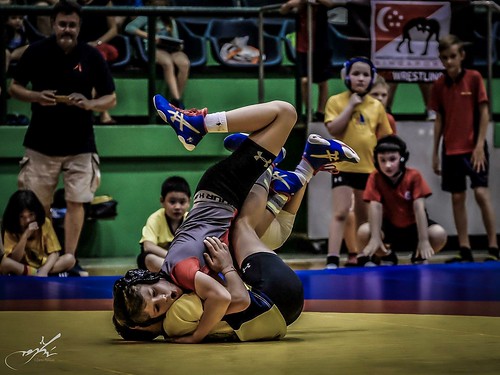no acid positions studied by web site directed mutagenesis in exosites I and II are marked in blue. The active web site serine is shown in green as well as the histidine and aspartic acids are hidden beneath an extending loop and thus not visible in this angle on the molecule. Two extended surface loops, the 60 loop plus the -loop are shown in yellow and orange, respectively. Thrombin structure from PDB, code 1DM4 run utilizing UCSF Chimera v1.eight and annotated in Adobe Illustrator CS5.
74 kDa) chains which can be bound by a copper ion [3, 5, 21]. FVa acts as an critical cofactor in thrombin generation and the rate of the prothrombin to thrombin conversion by FXa is enhanced by a number of orders of magnitude inside the presence of FVa and Ca2+ on phospholipid membranes [22]. The domain structure of FV is related to that of your very homologous FVIII (Fig 1). The third target, fibrinogen, is often a substantial complex of several polypeptides, the chain, the chain and the chain, where the activation entails the cleavage with the N-terminal of each the and also the chains thereby exposing a web page that facilitates the polymerization of the resulting fibrin molecules (Fig 1) [2]. The cleavage web site of your chain is in 885325-71-3 position 16 of the mature peptide and  position 14 within the chain (following signal sequence cleavage). The fourth target, human protein C, is synthesized as a 461 amino acid polypeptide, which soon after signal cleavage at residue 18, is 442 amino acids in length [23]. Just after a second cleavage at a tribasic website at position 42, the protein is 419 amino acids in size [23]. The protein consists of 4 domains, an N-terminal -carboglutamic acid domain, two EGF domains and also a C-terminal serine protease domain [24]. A third cleavage occurs by a however unknown protease for the duration of ER transport at sites 198 and 199 removing a dipeptide [25]. The resulting two-chain protein C is connected by a disulphide bond involving Cys183 and Cys319 (Fig 1) [25]. Activation by thrombin then removes a 12 amino acid long propeptide by cleavage at Arg211 (Fig 1) [25]. A cluster of acidic residues localizes N-terminally, and in some cases each N- and C-terminally, in the cleavage web pages for thrombin in FVIII, FV and fibrinogen chain. These regions could potentially form an electrostatic complementarity to the electropositive exosites in thrombin for efficient cleavage (Fig 1). Although each electropositive exosites within thrombin have already been reported to become involved within the thrombin-catalyzed activation of FVIII, tiny is identified concerning the mechanism and value of these electronegative internet sites of the substrate [26, 27]. To identify the contributions of those negatively charged residues towards the thrombin-catalyzed activation, we have utilised a brand new form of recombinant substrate not too long ago developed in our lab [28, 29]. These substrates contain two bacterial proteins having a brief linker in among, followed by a six-residue extended histidine tag for purification purposes (Fig 3). In the linker area, a cleavable sequence is inserted. This region can accomodate sequences from a few amino acids lengthy to potentially hundreds. The longest integrated so far is 94 amino acids, that is utilized for one particular of the FVIII sequences. These substrates can allow a quantitative evaluation from the contribution in the negatively charged exosite interacting regions for the cleavage by thrombin, which had previously only been doable with long synthetic peptides or in some instances the whole target protein. Chromogenic substrates are often short, four amin
position 14 within the chain (following signal sequence cleavage). The fourth target, human protein C, is synthesized as a 461 amino acid polypeptide, which soon after signal cleavage at residue 18, is 442 amino acids in length [23]. Just after a second cleavage at a tribasic website at position 42, the protein is 419 amino acids in size [23]. The protein consists of 4 domains, an N-terminal -carboglutamic acid domain, two EGF domains and also a C-terminal serine protease domain [24]. A third cleavage occurs by a however unknown protease for the duration of ER transport at sites 198 and 199 removing a dipeptide [25]. The resulting two-chain protein C is connected by a disulphide bond involving Cys183 and Cys319 (Fig 1) [25]. Activation by thrombin then removes a 12 amino acid long propeptide by cleavage at Arg211 (Fig 1) [25]. A cluster of acidic residues localizes N-terminally, and in some cases each N- and C-terminally, in the cleavage web pages for thrombin in FVIII, FV and fibrinogen chain. These regions could potentially form an electrostatic complementarity to the electropositive exosites in thrombin for efficient cleavage (Fig 1). Although each electropositive exosites within thrombin have already been reported to become involved within the thrombin-catalyzed activation of FVIII, tiny is identified concerning the mechanism and value of these electronegative internet sites of the substrate [26, 27]. To identify the contributions of those negatively charged residues towards the thrombin-catalyzed activation, we have utilised a brand new form of recombinant substrate not too long ago developed in our lab [28, 29]. These substrates contain two bacterial proteins having a brief linker in among, followed by a six-residue extended histidine tag for purification purposes (Fig 3). In the linker area, a cleavable sequence is inserted. This region can accomodate sequences from a few amino acids lengthy to potentially hundreds. The longest integrated so far is 94 amino acids, that is utilized for one particular of the FVIII sequences. These substrates can allow a quantitative evaluation from the contribution in the negatively charged exosite interacting regions for the cleavage by thrombin, which had previously only been doable with long synthetic peptides or in some instances the whole target protein. Chromogenic substrates are often short, four amin